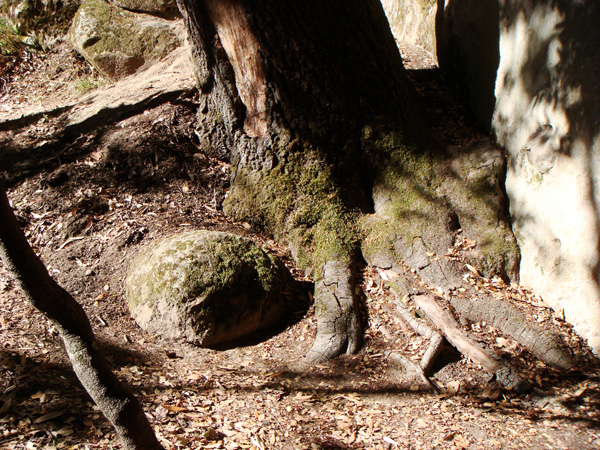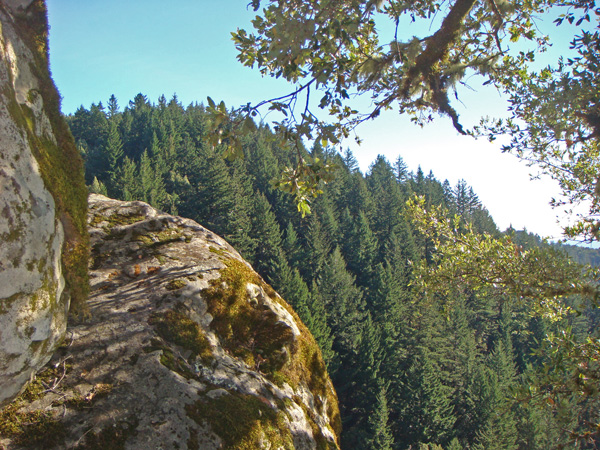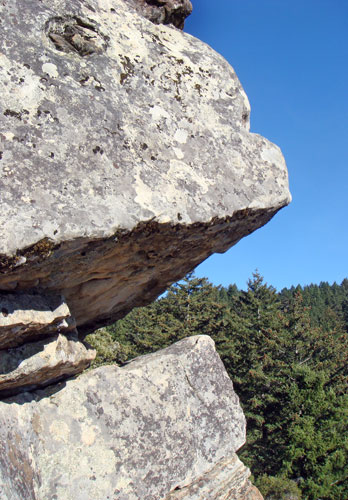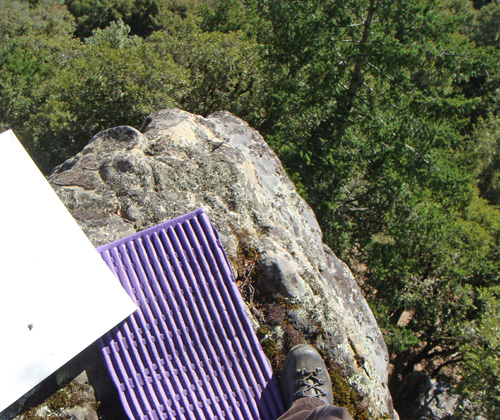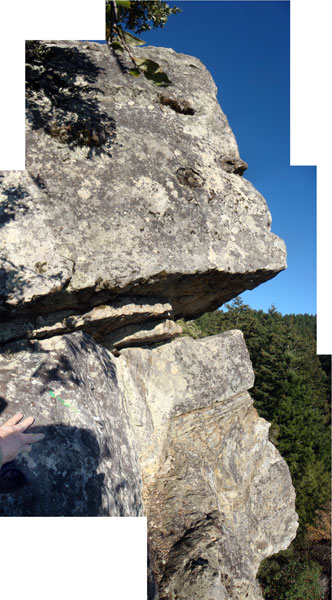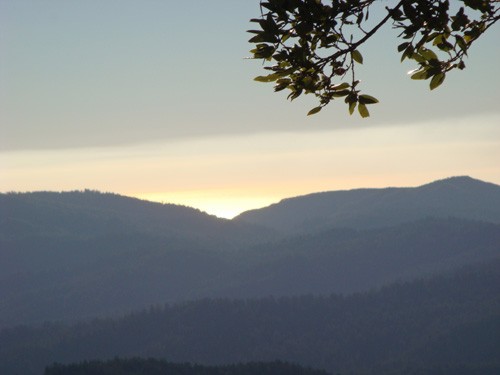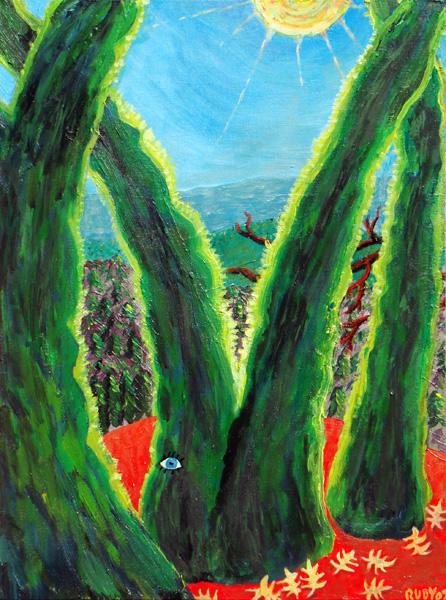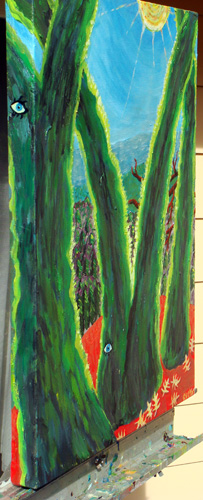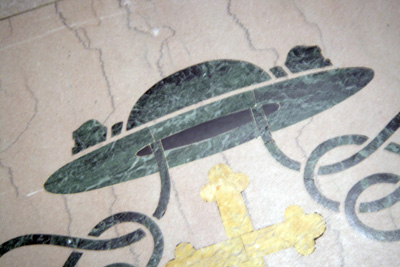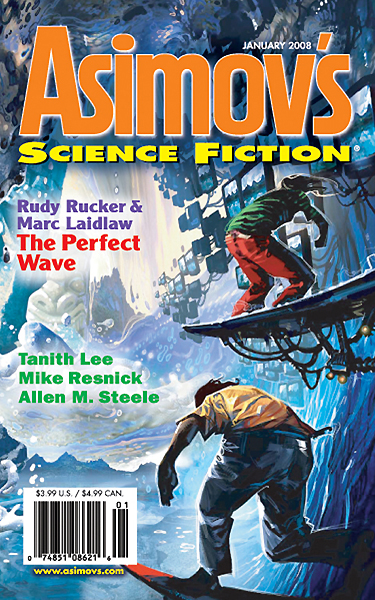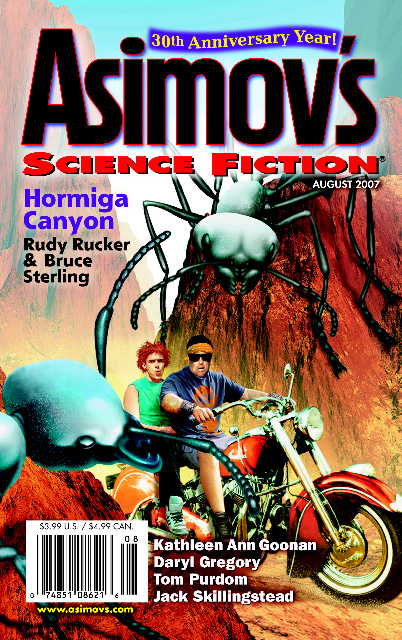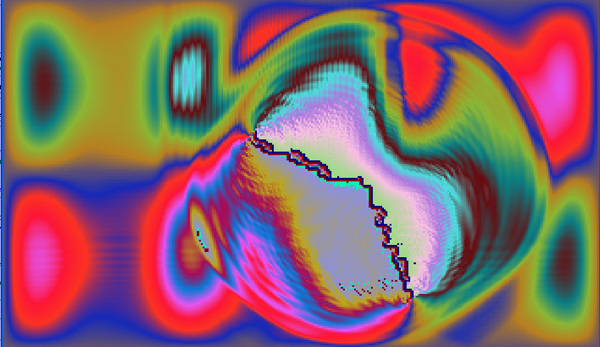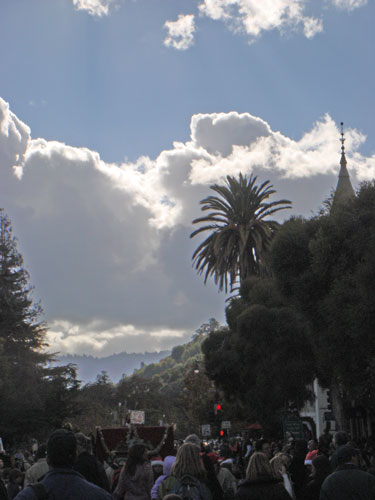
Went to the Los Gatos Xmas Parade this weekend. Sometimes it feels like a little mountain town here.
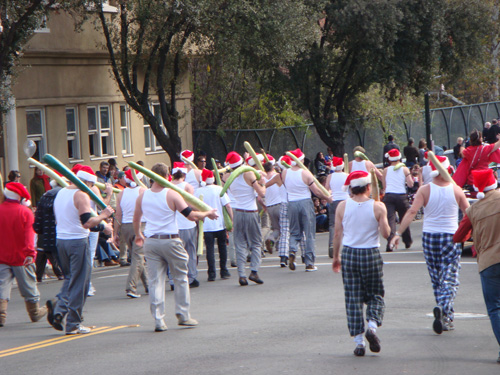
A bunch of guys had a giant zucchini squash marching drill team. The women standing in front of me where enthralled. “I want to be with those guys.” Phallic displays work!
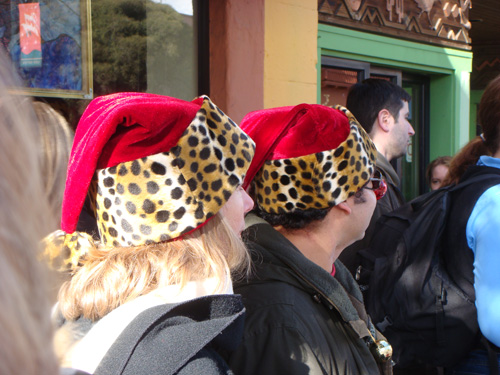
Every year there’s a new twist on the Santa hat. Leopard fur is the new flash for 2007. This couple were cute and happy, you could tell they’d planned their outifits.
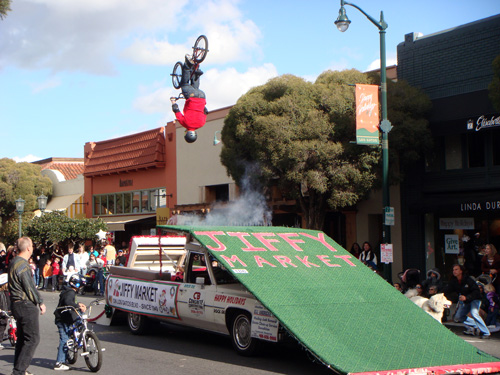
The best parade float is always from Jiffy Mart, which is basically a liquor store on Los Gatos Boulevard. I’m alway surprised—and glad—that the Authorities let this raffish crew bring their movable jump.
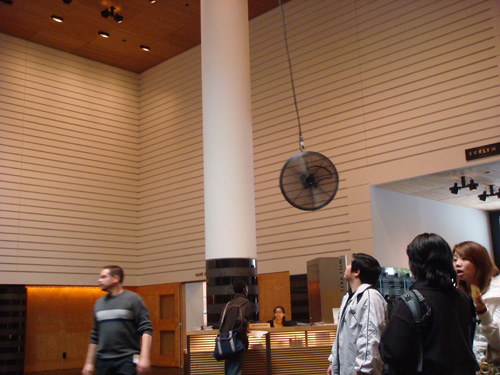
Yesterday we were at the SF MOMA to see the Olafur Eliasson show, definitely worth seeing. This one exhibit, called “Ventilator” is just a large fan hanging from a cable and moving chaotically, slowing down, speeding up, wandering about.
There are two dynamics at work: (a) as a suspended pendulum, the dangling fan tends to want to swing back and hang straight down (b) the fan’s blast pushes the fan according to which way the fan is pointing, and the fan itself is twisting back and forth simply because it’s a suspended object subject to torsional rotation.
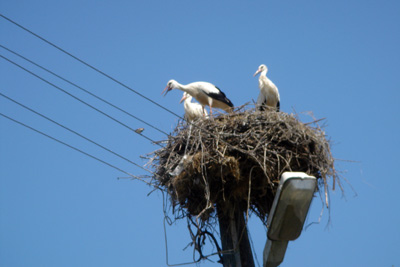
If I was still teaching CS, I’d have my students write a program to emulate this. I think you could write the program as a 2D Java applet. Just think of the shadow of the fan on the floor. We’d have a moving object with (a) a centrally directed spring force proportional to some constant A times the distance from the center and (b) a force with a fixed magnitude B and a direction given by the formula C*sin(D*t), where t is the elapsed time in the simulation world.
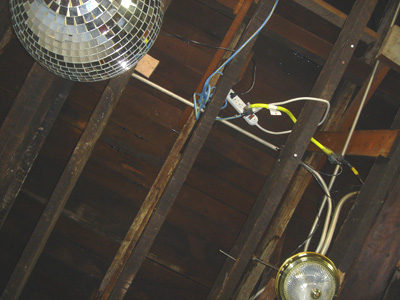
Think of tracking a moving position. Update in time increments dt, tracking scalar t, and vector position, oldposition, newlocity , oldvelocity, acceleration. At time t, the accleration on the point can be expressed as follows if I temporarily convert the position to polar coordinates (r, theta). In polar coordinates, the central force is the vector (-A*r, theta) and the fan force is (B, C*sin(D*t). Convert these back to cartesian coordinates and add them to get the acceleration. Play with the algebra a little to get the back and forth conversion simple — really the conversion is just a coneptual thing to help you figure out the right cartesian formulae.
To simulate the motion, pick any old starting position=oldposition and velocity=oldvelocity, and then update as follows (i) Compute the acceleration for position and velocity. (ii) set velocity to oldvelocity + dt*accleration. Set position to oldposition + dt*velocity. (iii) Draw a line segment from oldposition to position. (iv) Then copy position to oldposition, velocity to oldvelocity, add dt to t, and return to (i).
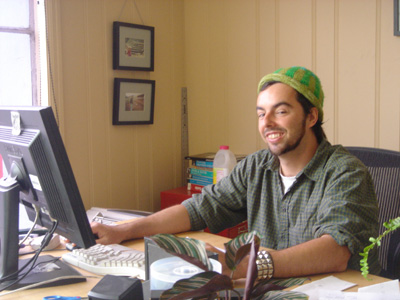
Problem: Get the simulation working as a Java applet (keeping in mind that some of my suggestions may be wrong as I haven’t actually written this program (although I have written programs like it)), tweak A, B, C and D to produce attractively chaotic motion and send me the link! First person to get it right gets a free signed hardback of Postsingular in the mail.
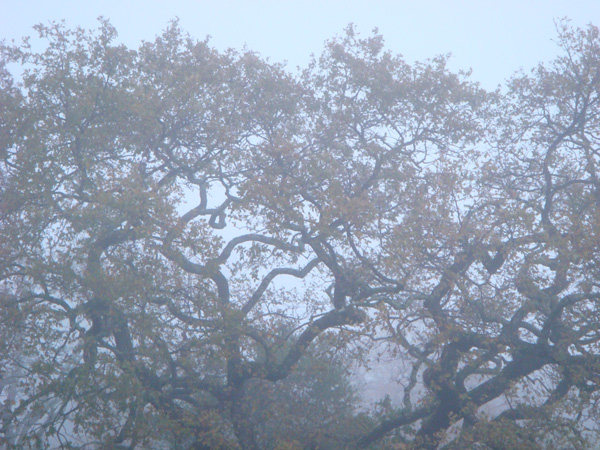
Lovely winter mist this morning. The etching of the oak branches.
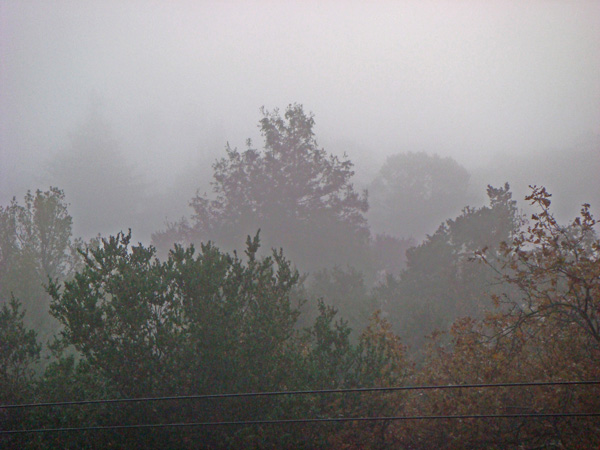
As well as that reindeer song, I keep hearing about “Rudy” and then they’re talking about an ugh Republican ugh Presidential ugh Candidate. Bring back the Clash song: “Rudie Can’t Fail”!
Let it go, merge into the mist.

Mentally I’m at the Szkocka Cafe (Scottish Cafe), fave hangout for Stan Ulam and other topologist/analyst/set theorist types in Lwow in th pre-war 1930s, and home of the famous Scottish Book of problems! Working on my story about infinity…









